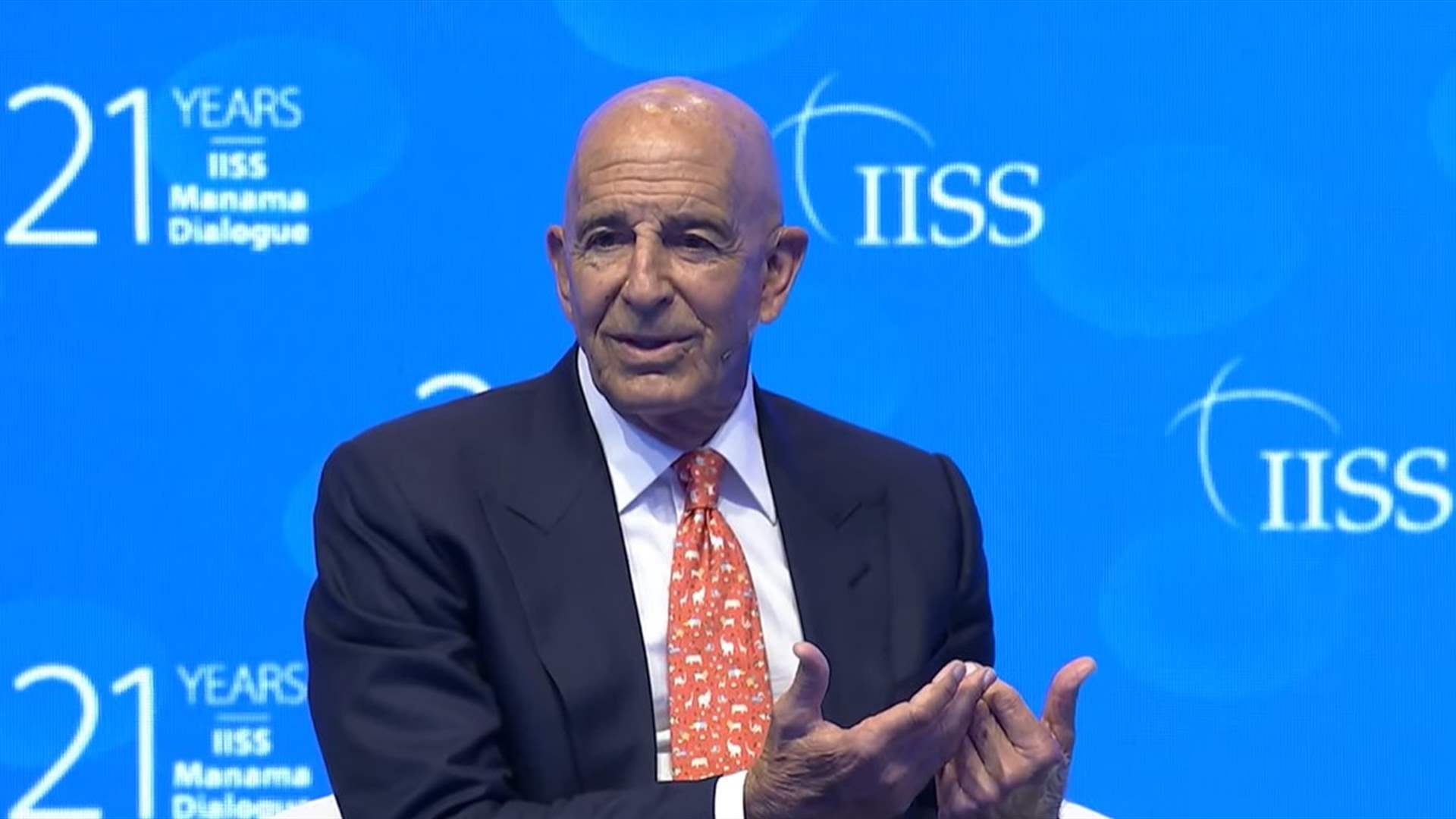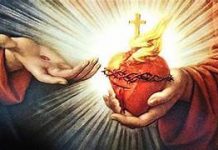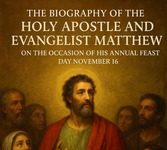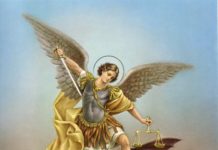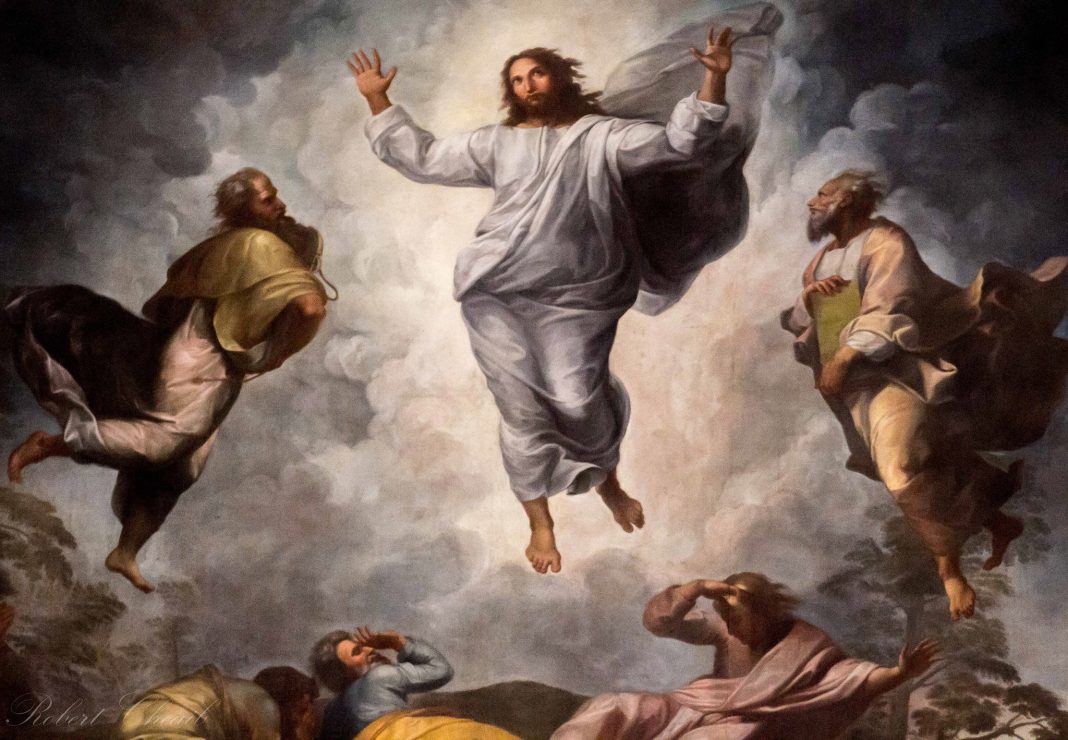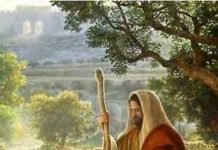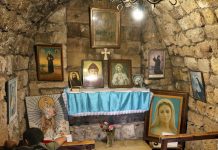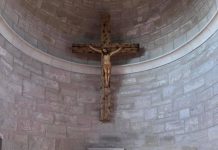The Feast of the Divine Transfiguration: The Light of Glory That Dispels the Shadows of Despair
Elias Bejjani/August 06/2025
عيد التجلي الإلهي: نور المجد الذي يبدّد ظلال اليأس
الياس بجاني/06 آب/2025
يُحتفل في السادس من آب من كل عام بعيد “التجلّي الإلهي”، وهو من أبرز الأعياد المسيحية التي تُعرف بالأعياد “السيدية الكبرى” أي الأعياد التي تتعلّق بحياة السيد المسيح وأحداثها المفصلية. إن كلمة “سيديّة” في هذا السياق تعني “خاصّة السيّد”، أي بالرب يسوع المسيح. ويُطلق هذا التعبير في الكنائس الشرقية، كالمارونية والسريانية والكلدانية، على الأعياد المرتبطة مباشرة بسرّ المسيح، كميلاده وموته وقيامته وتجليه. وتُستخدم في بعض هذه الكنائس كلمة سريانية قديمة هي “بَسِيكْتَا” (ܦܣܝܟܬܐ / Peskita)، وهي تشير إلى مجموعة من القراءات والعظات الليتورجية الخاصة بهذه الأعياد الكبرى. لذا فإن “عيد التجلي” ليس فقط مناسبة لذكرى حدث مقدس وإنجيلي حصل مرة واحدة، بل هو إعلان دائم عن هوية يسوع المسيح الإلهية، وهو كشف للمجد الإلهي الكامن فيه منذ الأزل.
في هذا العيد، نرى يسوع يصعد إلى جبل عالٍ، يُعتقد أنه جبل طابور، وهناك يظهر بمجده الإلهي أمام ثلاثة من تلاميذه: بطرس ويعقوب ويوحنا. يضيء وجهه كالشمس وتلمع ثيابه كالثلج، ويظهر معه النبيّان موسى وإيليا، في مشهد فائق للطبيعة يربط بين العهدين القديم والجديد. ويسمع التلاميذ صوت الآب السماوي يقول: “هذا هو ابني الحبيب الذي به سُررت، فله اسمعوا” (متى 17: 5). إنّ التجلي هو إعلان مُسبق عن القيامة، وإشعاع للنور الإلهي الذي لا يُقهر، وبشارة بالانتصار على الموت والظلمة، ورجاء يُجدّد الإيمان في زمن الشك واليأس.
معاني العيد اللاهوتية والروحية
إعلان ألوهية المسيح: يظهر يسوع أمام تلاميذه بوجهٍ متلألئ كالشمس وثياب ناصعة كالضوء، في إعلان واضح لطبيعته الإلهية التي كانت مخفية وراء الجسد البشري. إنه “نور من نور، إله حق من إله حق”.
استباق للقيامة: التجلي حدث قبل الصلب، وفيه سمح المسيح لتلاميذه الثلاثة أن يلمحوا مسبقًا مجده، كي لا يتعثروا عند مشاهدتهم آلامه. هو عربون رجاء بأن الموت ليس نهاية، بل عبور نحو النور.
اللقاء بين العهدين: ظهور موسى وإيليا إلى جانب يسوع يُمثّل العهد القديم – الشريعة والأنبياء – الذين يسلّمون العهد الجديد للمسيح، الذي هو كمال الناموس والنبؤات.
دعوة للثبات في الإيمان: صوت الآب من السحابة يقول: “هذا هو ابني الحبيب الذي به سررت، له اسمعوا” (متى 17: 5). إنها دعوة لنا لنستمع دومًا للمسيح، مهما اشتدت ظلمة الأيام.
النصوص الإنجيلية التي تروي التجلي
في العهد الجديد:
إنجيل متى 17: 1-8:
“وأخذ يسوع بطرس ويعقوب ويوحنا أخاه، وصعد بهم إلى جبل عال منفردين. وتغيّرت هيئته قدّامهم، وأضاء وجهه كالشمس، وصارت ثيابه بيضاء كالنور…”
إنجيل مرقس 9: 2-8
“وتغيّرت هيئته قدّامهم، وصارت ثيابه تلمع بيضاء جدًا كالثّلج، لا يقدر قصّار على الأرض أن يبيّض مثلها…”
إنجيل لوقا 9: 28-36
“وفيما هو يصلي، صارت هيئة وجهه متغيرة ولباسه مبيّضًا لامعًا. وإذا رجلان يتكلمان معه، وهما موسى وإيليا…”
رسالة بطرس الثانية 1: 16-18
“لأننا لم نتبع خرافات مصنعة، إذ عرّفناكم بقوة ربنا يسوع المسيح ومجيئه، بل قد كنا معاينين عظمته…”
في العهد القديم (رموز وإشارات):
خروج 24: 15-18 – موسى يصعد إلى الجبل، ويغطيه السحاب، ويظهر مجد الرب.
خروج 34: 29-35 – وجه موسى يلمع بعد حديثه مع الرب.
ملوك أول 19: 8-13 – إيليا يختبر حضور الرب في جبل حوريب، لا في العاصفة بل في صوت نسيم لطيف.
تاريخ تحديد العيد في الكنيسة
عُرف عيد التجلي في الشرق منذ القرن الرابع، وتثبّت كعيد رسمي على يد البابا كاليستوس الثالث عام 1457، بعد انتصار الجيوش المسيحية على العثمانيين في معركة بلغراد، التي صادفت يوم السادس من آب. ومنذ ذلك الحين، أُقرّ الاحتفال بالعيد في هذا التاريخ، في زمن البابا نيقولا الخامس أولاً، ثم البابا كاليستوس. وقد صار رمزًا لانتصار النور المسيحي على ظلمة الاحتلال والاستبداد.
لبنان والتجلي: من الجلجلة إلى الفجر
لبنان اليوم يعيش جلجلته، مصلوبًا جراء الاحتلال الإيراني المذهبي والتوسعي والهمجي المتمثل بذراعه المحلية الطروادية افرهابية المسماة كفراً “حزب الله”، هذا الحزب سرق من اللبنانيين أمنهم، ومن الشيعة تحديدًا أبناءهم وأحلامهم. لكن، كما لم تبقَ آلام الجلجلة بدون قيامة، هكذا لن يبقى لبنان في ظلمة الاحتلال الإيراني البربري هذا، وكما قال الرب لتلاميذه: “لا تخافوا” (متى 17: 7)، هكذا يقول اليوم للبنانيين: “تشجّعوا، أنا هو، لا تخافوا”.
في التجلي، غيّر يسوع هيئة وجهه، وبدّل ظلمة الجبل إلى نور، ونحن المؤمنين والحرار اللبنانيين نؤمن أنه سيأتي اليوم الذي يتجلّى فيه نور السيادة والحرية والإستقلال على أرض لبنان، ويسقط كل صنم للعبودية، وكل هيكل للكذب والإرهاب والأصولية والجهادية والسلاح غير الشرعي.
صلاة ختامية
يا ربّ المجد المتجلّي على الجبل، أنِرْ بنورك دروبنا المعتمة، وافتح عيوننا لنرى وجهك في وسط أوجاعنا.
أزِل الغشاوة عن بصيرتنا، كما أزحتها عن تلاميذك، فندرك أن مجدك حاضر حتى في الألم.
أنقذ لبنان، وبدّد ظلمة الطغيان، وأشرق على وطننا بنور الحقيقة والسلام، لنتحوّل كما تحوّلت على الجبل،من عبيد للخوف إلى أبناء في النور.
آمين.
***الكاتب ناشط لبناني اغترابي
رابط موقع الكاتب الإلكتروني
https://eliasbejjaninews.com
عنوان الكاتب الإلكتروني
phoenicia@hotmail.com
The Feast of the Divine Transfiguration: The Light of Glory That Dispels the Shadows of Despair
Elias Bejjani/August 06/2025
Every year on the sixth of August, the Church celebrates the Feast of the Transfiguration of the Lord, one of the major Feasts of the Lord—also known as the Great Feasts—which mark key events in the life and mystery of our Lord Jesus Christ. The term “Feasts of the Lord” refers to those holy days that center directly on Christ’s divine mission—His Nativity, Passion, Resurrection, Ascension, and, indeed, His Transfiguration. In Eastern churches such as the Maronite, Syriac, and Chaldean traditions, these feasts are accompanied by a body of liturgical readings and homilies known in Syriac as Peskita (ܦܣܝܟܬܐ)—a term designating the solemn scriptural and homiletic heritage reserved for the Church’s most sacred days.
The Transfiguration is not merely the remembrance of a miraculous event in Christ’s earthly life. Rather, it is an eternal revelation of His divine nature, a glimpse of the glory that is His from before all ages—hidden in the flesh but now unveiled in radiant light.
On this sacred day, we behold Jesus ascending a high mountain—believed to be Mount Tabor—accompanied by three of His apostles: Peter, James, and John. There, before their eyes, “He was transfigured before them; His face shone like the sun, and His garments became white as the light” (Matthew 17:2). Appearing with Him were Moses and Elijah, representing the Law and the Prophets—standing in awe before the One who fulfills them both. From the bright cloud came the voice of the Father: “This is My beloved Son, in whom I am well pleased. Listen to Him” (Matthew 17:5).
The Transfiguration is a foreshadowing of the Resurrection, a bursting forth of the unconquerable light of divinity, and a beacon of hope amid trials and darkness. It assures us that suffering is not the end, and that the path of the Cross leads to the brilliance of divine life.
Theological and Spiritual Meanings of the Feast
1. Proclamation of Christ’s Divinity
In shining face and dazzling garments, Christ reveals His divine nature. He is “Light from Light, true God from true God,” no longer veiled, but radiant in truth.
2. A Glimpse of the Resurrection
The event occurs before the Passion to strengthen the disciples, giving them a foretaste of Christ’s victory over death. It is a promise that suffering will give way to glory.
3. Union of the Old and New Covenants
Moses and Elijah represent the Law and the Prophets, which now find their fulfillment in Christ. The Transfiguration unites the Old Testament with the New.
4. A Call to Faithfulness
The Father’s voice says: “Listen to Him.” It is a divine command for all generations—to remain faithful to Christ even when the days grow dark and uncertain.
Scriptural Accounts of the Transfiguration
In the New Testament:
Matthew 17:1–8
“Jesus took with Him Peter, James, and John his brother, and led them up a high mountain by themselves. And He was transfigured before them…”
Mark 9:2–8
“He was transfigured before them. His clothes became dazzling white, whiter than anyone in the world could bleach them…”
Luke 9:28–36
“As He was praying, the appearance of His face changed, and His clothes became as bright as a flash of lightning. Two men, Moses and Elijah, appeared in glorious splendor…”
2 Peter 1:16–18
“We were eyewitnesses of His majesty… For He received honor and glory from God the Father when the voice came to Him from the Majestic Glory…”
Foreshadowings in the Old Testament:
Exodus 24:15–18 — Moses ascends the mountain, and the cloud of God’s glory covers it.
Exodus 34:29–35 — Moses’ face shines after speaking with the Lord.
1 Kings 19:8–13 — Elijah encounters God on Mount Horeb, not in the storm but in a gentle whisper.
Historical Establishment of the Feast
The Feast of the Transfiguration was celebrated in the Christian East as early as the fourth century. It became an official feast for the whole Church when Pope Callixtus III declared it so in 1457, commemorating the miraculous Christian victory over the Ottoman forces in the Battle of Belgrade, which took place on August 6 of that year. The feast, already known in the East, was thus fixed in the Roman liturgical calendar under Pope Nicholas V and later ratified under Callixtus. Since then, it has stood as a symbol of Christian light triumphing over the shadows of tyranny and conquest.
Lebanon and the Transfiguration: From Calvary to the Dawn
Today, Lebanon lives its own Calvary—crucified under the yoke of a brutal, sectarian, and imperial occupation spearheaded by the Iranian regime and its local Trojan horse: the so-called “Hezbollah.” This militia has stolen the dreams and dignity of all Lebanese, especially the Shiite youth who have been sacrificed to its foreign agenda.
But just as Golgotha did not end in the tomb, so too Lebanon shall not remain in the darkness of this foreign barbaric oppression. As the Lord said to His terrified disciples: “Do not be afraid” (Matthew 17:7), so too He says to the people of Lebanon today: “Take heart, it is I; do not be afraid.”
In the Transfiguration, Jesus changed His appearance and transformed the mountain’s gloom into divine radiance. We, the faithful and free sons and daughters of Lebanon, believe that the day will come when the light of sovereignty, liberty, and true independence will break forth upon our land. Every idol of tyranny will fall, and every altar of deception, terrorism, fundamentalism, and illegal arms shall crumble.
Final Prayer
O Lord of Glory, who was transfigured before Your chosen ones, Shine Your divine light upon our darkened paths.
Open our eyes, as You did with Your disciples, That we may behold Your face even amid our suffering.
Remove the veil from our hearts, and let us see Your presence in our trials.
Deliver Lebanon, scatter the clouds of oppression, And rise upon our nation with the light of Your peace and truth.
May we, like You on the mountain, be transfigured—From slaves of fear into children of light.
Amen.





